Japan is home to mysterious yokai shrines, one of which is located on Shodoshima Island.
Most Japanese students are familiar with the kappa—a creature that is a hybrid of a frog and a turtle with a concave head, known to drown people by pulling them into rivers. There are also tengu—a monster with a bright red face and a long nose, often lurking in the woods—and tanuki—a supernatural variant of the raccoon dog, believed to have the power to make someone foolish.
All of these are yokai—or spirits in traditional Japanese folklore. These creatures were once used to explain mysterious phenomena at night, such as strange noises, issues with food shortages in homes, or damage to property from rain and wind. Today, as a cultural heritage, yokai are found everywhere in fairy tales, cartoons, advertisements, television, and cinema.
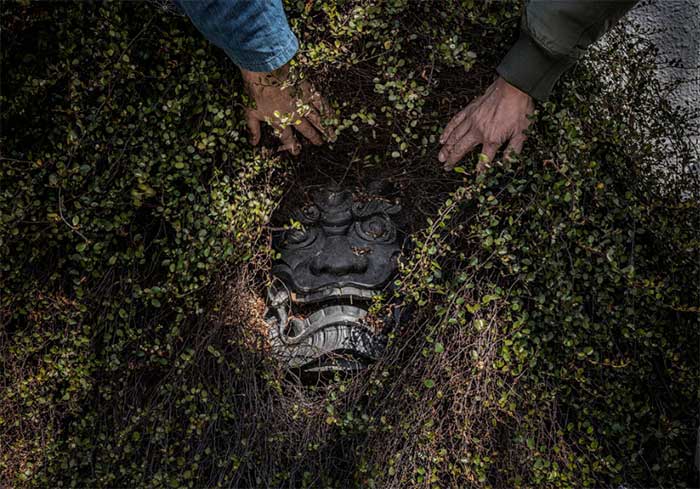
On Shodoshima, it’s easy to encounter mythical creatures hiding throughout the island. (Photo: James Whitlow Delano/ The New York Times)
However, what makes yokai truly special is that these stories are not frozen in classical legends or limited to a narrow list of familiar characters from Japanese culture. Instead, each generation creates new yokai, reflecting collective unconscious anxieties about contemporary issues.
The “Goblin Island”
The shrines dedicated to these creatures are evident on Shodoshima, a small island in Japan. Here, residents often hold art competitions, inviting participants to freely imagine and create new yokai for today.
One of the winning pieces from a competition held last month featured a creature with blue fur and bright red hearts glowing in its eye sockets. The creator, Rika Nakamichi, stated that the image reflects an obsession with gaining attention and acceptance on social media.
Another piece currently housed in a museum on the island is a pair of high heels adorned with spikes resembling teeth. This “creature” is reminiscent of a recent campaign urging Japanese employers to stop requiring female employees to wear high heels. Another yokai depicted is a lizard with a long tongue that licks the faces of subway passengers distracted by their mobile phones.
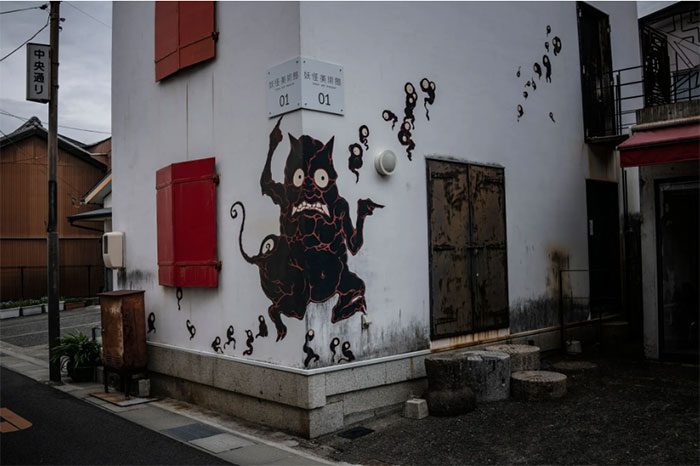
A yokai drawing created by local artist Chubei Yagyu on the wall of the Yokai Art Museum, which features over 900 descriptions of mysterious creatures. (Photo: James Whitlow Delano/ The New York Times)
Kazuhiko Komatsu, an emeritus professor of cultural anthropology at the International Research Center for Japanese Studies in Kyoto and author of “An Introduction to Yokai Culture,” stated, “Anything can become a yokai, even things we don’t know exist.”
Professional artists and hobbyists from across Japan submitted 75 quirky and humorous sculptures to this year’s competition, a decrease from the 243 entries in 2013, the competition’s inaugural year.
Alongside the blue-colored monster, among the finalists was a thin green yokai that would invade your mouth if you don’t brush your teeth. Another yokai resembled a piggy bank covered in kanji—characters used in Japanese text—reflecting the artist’s fear that these characters may vanish from a culture where people type using phonetic input on smartphones.
Chubei Yagyu, a 46-year-old local artist and judge of the competition, remarked, “Different artists have their own rules about what they think is a yokai. Creating new yokai is the most wonderful aspect of this competition.”
Animistic Beliefs
Scholars trace the origins of yokai in references to literature or art as far back as the 11th century. In addition to explaining strange events, yokai can be seen as living entities, in line with Japan’s original animistic beliefs.

(Photo: James Whitlow Delano/ The New York Times)
“The Japanese feel relieved when you name something,” said Mitsuo Takeda, a judge for the Shodoshima competition and an artist who designed a large installation featuring a bug-eyed yokai. “If you’re weeding and cut your hand, you wonder what happened,” he explained, “but if you think, oh, it’s just a yokai, then you feel calmer.”
A renowned scholar and artist from the 18th century, Toriyama Sekien, compiled an encyclopedia of creatures drawn from his imagination.
In modern times, the series “Ge Ge Ge no Kitaro” by manga artist Shigeru Mizuki created a world of new yokai characters, inspiring subsequent generations of yokai manga artists and fans.
Japanese pop culture today is filled with descendants of early yokai, including characters in the Pokémon universe and the whimsical creatures in Hayao Miyazaki’s imagination, such as Totoro or the bathhouse spirits in the famous Ghibli film “Spirited Away.” More recently, the influence of yokai can be seen in the monsters of “Demon Slayer.”
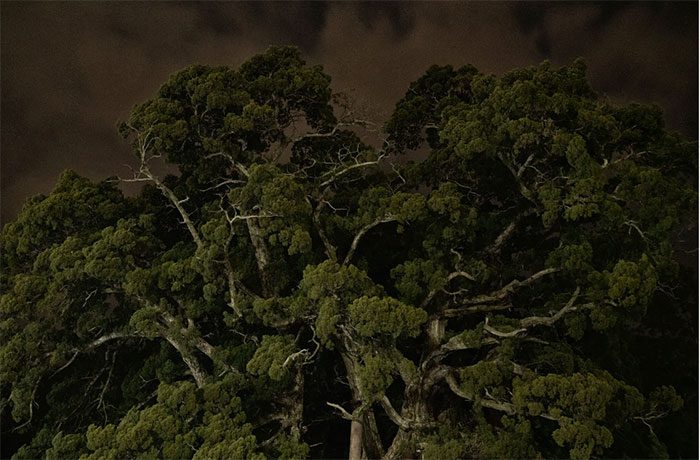
Upon closer inspection, this 1,600-year-old juniper tree on Shodoshima can resemble a fire-breathing dragon. (Photo: James Whitlow Delano/The New York Times)
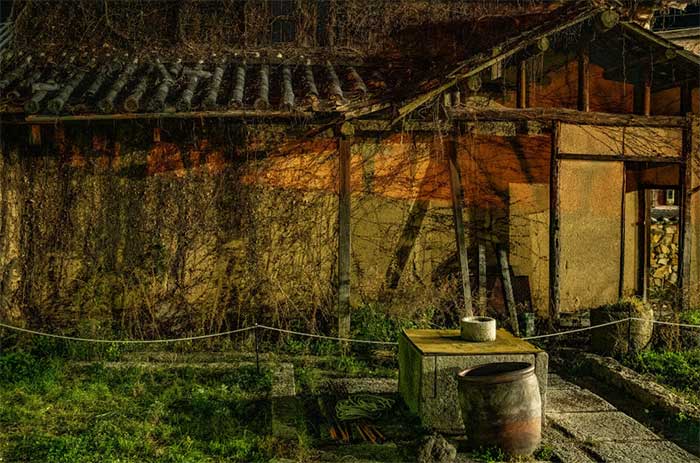
In Japanese folklore, it is believed that yokai live among humans in various forms.
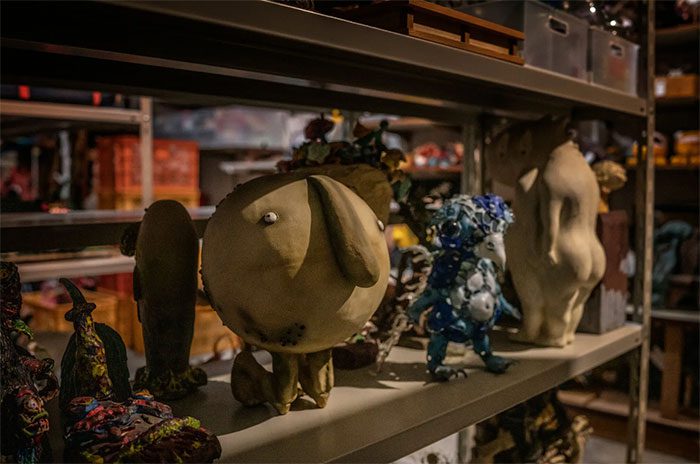
Entries from the competitions.


















































